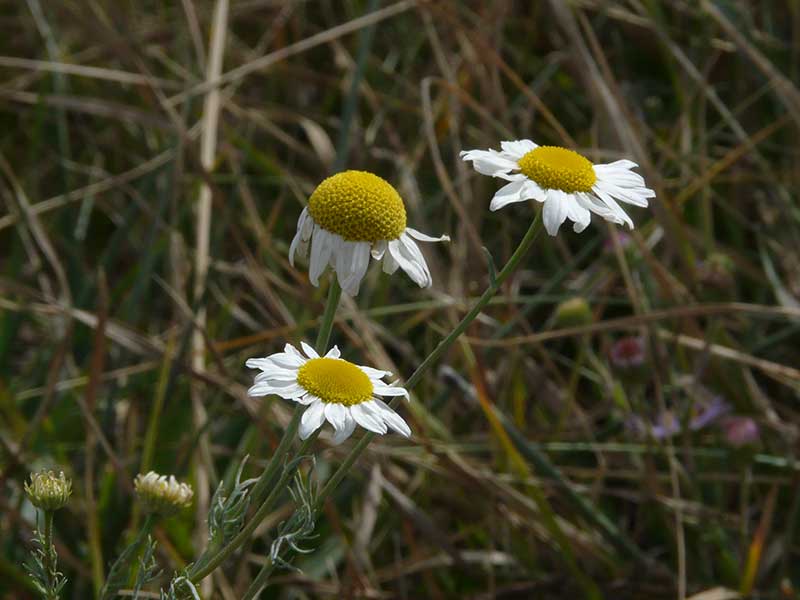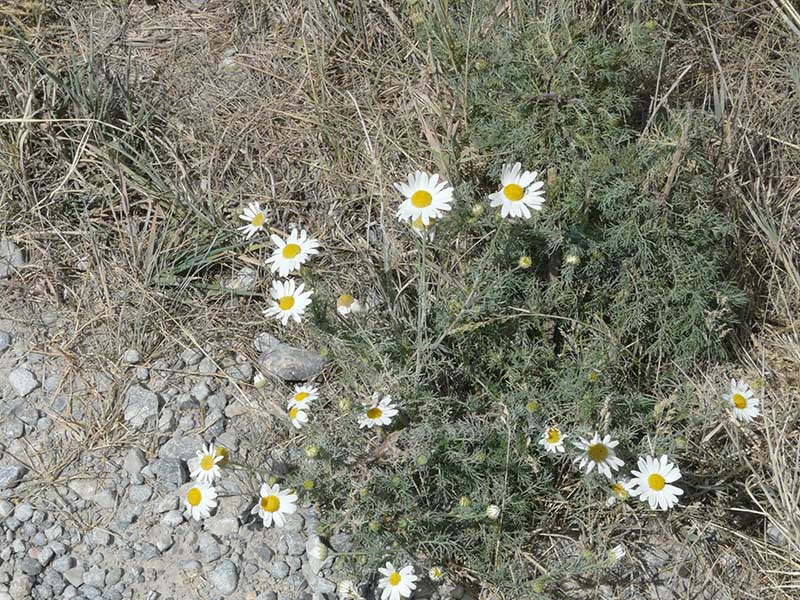Tripleurospermum inodorum / scentless chamomile
- daisy-like blossoms with finely divided leaves
- central disk shape changes from button- to dome- to hemisphere- with age
- ray petals droop as disk expands
- leaves don’t smell when crushed
Also known as: scentless false mayweed, scentless mayweed, wild chamomile, mayweed, false chamomile, Baldr’s brow
Synonym: Matricaria perforata, M. inodorum
The scentless chamomile is an interesting little introduced weed found in a wide variety of disturbed habitats, including fields, fallow land, gardens wastelands and roadsides. As the name implies, it looks like a real chamomile, and used to be included in the same genus, Matricaria. What that actually means is the leaves are feathery/finely divided/fern-like with thread-like lobes. But unlike real chamomile, when you crush the leaves, there is no odor; they are “inodorous”.
The blossoms of this plant are daisy-like, and appear singly at the tips of branching stems. They are about 1-2 inches across with 10-25 white petals (ray flowers). The central disk is golden yellow and changes from button-shaped to dome, hemispherical shaped, to nearly spherical as it matures. The rays droop as the disk expands, eventually to be bent straight down at maturity. All of these stages can be found on a single plant (see the gallery photos). Eventually, the rays simply fall off, leaving the disk. A characteristic of this species that distinguishes it from some relatives is that if you cut or tear through the central disk, it is solid, not hollow.
Scentless chamomile propagates by seed, and produces them in humongous numbers. The seeds remain viable in the soil for years. Indeed, they also largely survive being eaten and excreted, although cattle appear to avoid eating the plant.
| Color | |
|---|---|
| Family | |
| Blossom size | |
| Inflorescence size | |
| Inflorescence type | |
| When? | |
| Where? |





